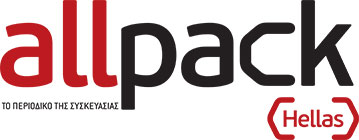Availability on the market is good as demand remains weak / Another slump in prices expected in June / Will EU soon decide on punitive tariffs on PVC imports from Egypt, the US?
PE: The first price reduction of the year for the ethylene monomer (down EUR 10/t) turned out in many negotiations in May to be “incidental”, because overall supply was too high and demand too weak. Polymer prices dropped by much more than the fall in the cost of the monomer. Attempts by producers to counter this proved worthless because, even if European plants were producing with heavily reduced output, imports kept the supply situation stable. Across all types, more material was available than was needed to fulfil the contracts. At the same time, there was a lack of stimulus from customer industries. For this reason, most converters bought only what they absolutely needed and speculated on further dropping prices. The starting point for many negotiations in June is likely to be the renewed fall in the cost of ethylene (down EUR 30/t). The market is still expected to have more material available than is needed. Only the supply of individual speciality types is subject to a certain delay, and, even if the higher number of production days than in the previous month should see demand pick up a bit, it will not reach a normal level. For July, there are signs of a special constellation – because the freight rates for the transport of containers from China to Europe are currently climbing, observers expect import volumes to decline, or for supplies to come to a complete halt. Two major suppliers have already announced this. It should mean that the market for individual types will become balanced again towards the end of July.
PP: The propylene contract turned downwards in May and fell EUR 10/t. Polymer prices followed the downward trend. However, as the market was oversupplied despite all the efforts of European producers to keep availability tight, processors were able to achieve significantly larger discounts. The strong influx of imported material also noticeably augmented the market. Beyond this, the lull in demand continued: above all, the consumer and packaging sectors were weak. The short production month with its many public holidays and associated extended weekends took care of the rest. The C3 reference contract for June fell again (down by EUR 30/t). This will maintain the pressure on polymer prices and cause them to trend downwards further. On the supply side, there continues to be no expectation of difficulty – especially since the order lead time of many companies is not yet sufficient to cope well with the long production month.
PVC: The upward trend of the two previous months has ended. PVC quotations trended lower in May, aided by the ethylene contract, which declined EUR 10/t compared with April. Processors were in part able to gain more extensive price cuts, among other things due to the still-sluggish order situation in construction. In June, prices could stabilise at the level of half the decrease of the ethylene contract, which was fixed EUR 30/t lower. While players in the new building sector still describe demand as weak, other customer segments are giving off positive impulses. These include pharmaceutical packaging and building renovation. The current situation in Mexico is unlikely to have much of an impact on supply in Europe in June. Imports from the Far East are meanwhile declining again, not least due to the high freight costs. Knock-on effect of the alternate shipping route – Turkey is coming to the fore again as an export market. European supply is overall not expected to be in danger. There is currently no news from Brussels; the European Commission is still investigating the alleged dumping prices and the possibility of punitive tariffs on PVC imports from the US and Egypt. Should such tariffs be implemented, the EU commission would have to publicise its measures by mid-June. Experts are holding back with their prognosis.
Styrenics: In May 2024, declining feedstock costs ended the three month long upwards trend in styrenics prices. However, quotations generally did not erode as much as the styrene reference (down EUR 111/t), as suppliers were able to retain part of the cost reductions, particularly in the first half of the month. In the second half, however, discounts increasingly approached the full styrene decrease. In some cases, the prices were fixed even lower. The picture was similar for ABS: the overall decline in composite costs (SM down EUR 111/t, butadiene up EUR 45/t, ACN down EUR 4/t) set the course for decreases, which for ABS extrusion materials correspondingly landed between EUR 50/t and EUR 70/t with a certain degree of variance. In contrast, the price reductions for ABS injection moulding grades and coloured ABS materials were often somewhat less extensive because both imports and distributors who had not fully transferred the previous price increases had a moderating influence. Styrenics prices are expected to trend down further in June, as the styrene reference declined once more in the final month of Q2 (down EUR 30/t), and weak demand will probably prompt processors to push for slight discounts. For ABS, meanwhile, it could come down to rollover or minimal discounts, as the composite costs (SM down EUR 30/t; butadiene up EUR 25/t; ACN down EUR 40/t) declined to a similarly modest extent (down EUR 15/t).
PET: There was hardly any change in the situation on the European PET market in May compared to the previous month. The controversial and subsequently announced surcharge of EUR 38/t for precursor paraxylene in April was reversed in May. As a result, PX costs have remained largely stable with slight fluctuations since the beginning of the year. Imports remained unattractive, both in terms of price and, above all, security of supply. On the other hand, the plants of European suppliers ran largely trouble free and at a good level. Output was more than sufficient to cover the renewed, rather disappointing demand. Hopes for the upcoming events in Europe, the European Football Championships and the Olympics, have not yet materialised. As a result, the rollover remained largely unchanged. There were only marginal increases in smaller quality purchases. Even the upcoming events no longer offer any great hopes. For better or worse, market participants are slowly coming to terms with the slack conditions. Therefore, not much movement can be expected in June.
For more than 35 years, PIE has been an invaluable source of information for European plastics industry decision makers – a quick, yet in-depth look at the development of plastics markets and polymer prices. Available online 24/7 and as a printed newsletter twice a month. To read the entire report, go to www.pieweb.com and sign up for a 48-hour free trial!


































